"Major Assignments"
On the foundation of experimental research on grains, the Taitung District Agricultural Research and Extension Station (TTDARES) Upland Crops Lab works in accordance with core targets of the Council of Agriculture and, in consideration of the features and environment of Taitung County, is promoting the special-crop industry and examining future development trends with special attention to experimentation, improvement, demonstration, and promotion of the following crops:
Selective Breeding and Product Development of Millet
The TTDARES has developed the excellent-quality millet varieties Taitung Selected No. 1~6 and Taitung No. 7~9. No. 8 and No. 9 produce high yields (20-30% higher than local varieties) of good quality which are resistant to diseases and pests. They are being actively promoted, and vacuum packaging and related products are being developed, giving millet added value and diversifying local crop development.
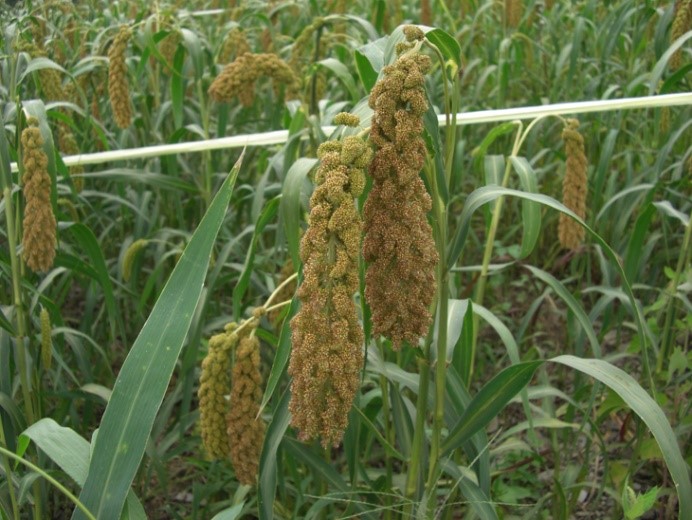 |
 |
| Taitung‘No. 8’millet | Taitung‘No. 9’millet |
Selective Breeding and Product Development of Pigeon Peas
Pigeon peas are a legume grown in Taitung and traditionally one of the major staples for Taiwanese Indigenous people. Highly nutritious, they have received much attention in recent years. The TTDARES has selectively developed three varieties with high yields and quality that are resistant to diseases and pests: Taitung No. 1 (white), Taitung No. 2 (mahogany), and Taitung No. 3 (black). Vacuum packaging and related products are being developed to boost their industry value.
 |
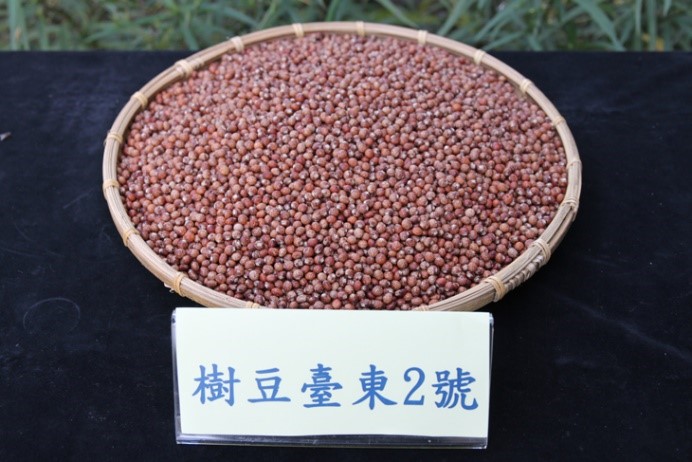 |
| ‘Taitung No. 1’pigeon peas | Taitung‘No. 9’millet |
 |
|
| ‘Taitung No. 3’pigeon peas | |
Selective Breeding and Product Development of Djulis
Chonopodium formosanum (also known as djulis and traditionally grown by Taiwanese Indigenous people) was given its official name in December 2008. The TTDARES has focused djulis research on variety diversity, the all-year cash-crop cultivation of young djulis stems and leaves for use as vegetables, potted-plant selective breeding, cut-flower collection and processing, health product development, harvesting, hulling machinery development, germplasm collection, and selective breeding. The TTDARES has developed‘Taitung No. 1’, a red-purple variety, and ‘Taitung No. 2’, a red-orange variety, both of which ripen early and are rich in protein. Moreover, they ripen at the same time, remedying the inconvenience of harvesting traditional varieties that ripen at different times. Vacuum packaging and related products are being developed, giving djulis added value and diversifying local crop development.
 |
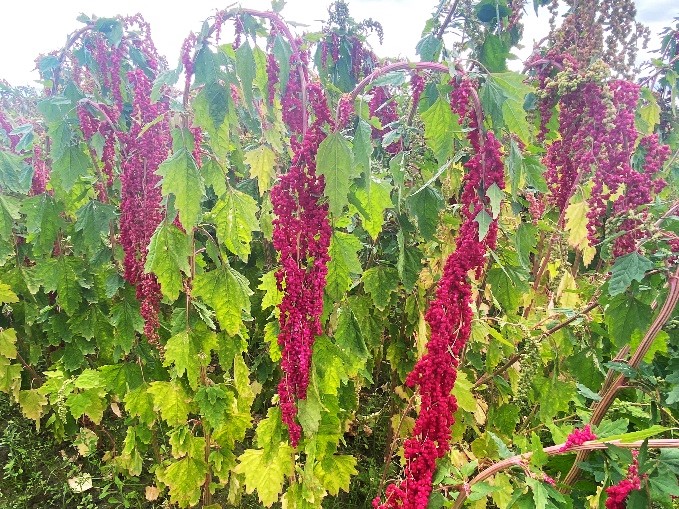 |
| Different colors of djulis flower spike | ‘Taitung No. 1’djulis |
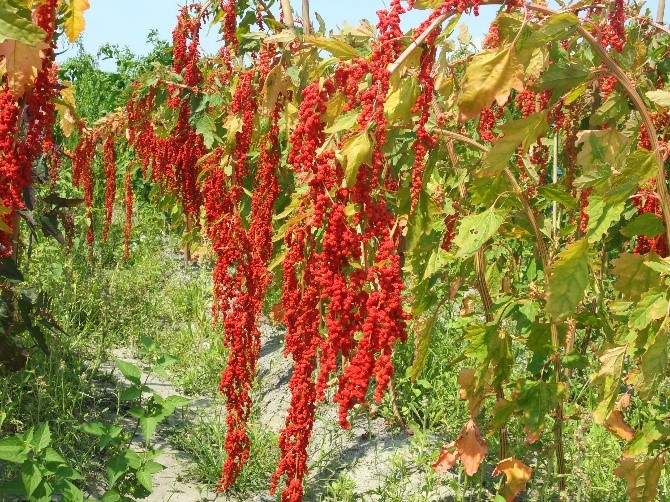 |
|
| ‘Taitung No. 2’-Morning djulis | |
Selective Breeding and Cultivation Technology Research of Other Grains
As global climate change is leading to an increase in extreme weather, the TTDARES is working to expand on Taitung’s stress-tolerant grain crops. We applied to the National Plant Genetic Resources Center to introduce pearl millet and chickpeas to conduct observation and experiments on certain varieties and explore cultivation management methods so as to promote these new crops. Also, to encourage farmers to make use of fallow ground, we have accumulated varieties of soybean commonly used in Taiwan and conducted experiments on their adaptability as a reference to farmers who may wish to grow them.
- Pearl millet
Pearl millet is heat- and drought-resistant and grows well in unfertile ground, so it may be cultivated in places with relatively little rainfall. Its ripe grains are rich in protein, making them a major staple crop in Asia and Africa. We chose two of four varieties we obtained from the National Plant Genetic Resources Center to observe and conduct experiments on for three years, during which time we saw no serious pest or disease problems. We will continue to observe how they grow and the state of their disease and pest resistance in Taitung while exploring cultivation techniques and post-harvest processing.
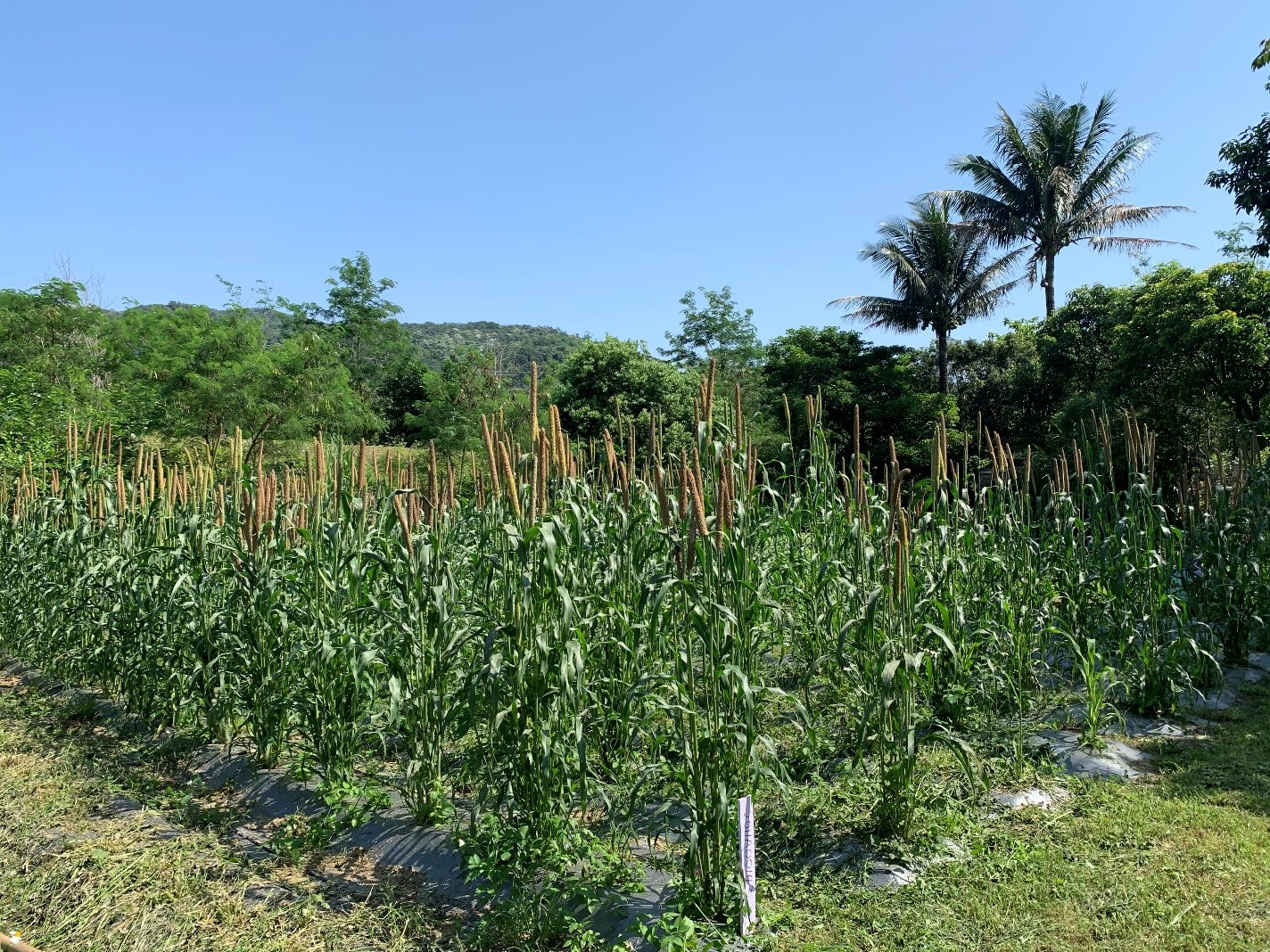 |
 |
| Heading pearl millet | Ripe pearl millet grains |
- Chickpeas
Chickpeas are drought-resistant and can grow in cool environments and may thus be a good legume to be grown in fall and winter. Ripe peas are rich in carbohydrates, protein, lipids, fibrin, and minerals. We chose six (three Kabuli [white skins] and three Desi [brown skins]) of 20 varieties we obtained from the National Plant Genetic Resources Center and compiled data on growing seasons, planting distance, and fertilization. We have also developed two chickpea recipes. We will select the best varieties of these six to promote and continue to optimize cultivation management techniques.
 |
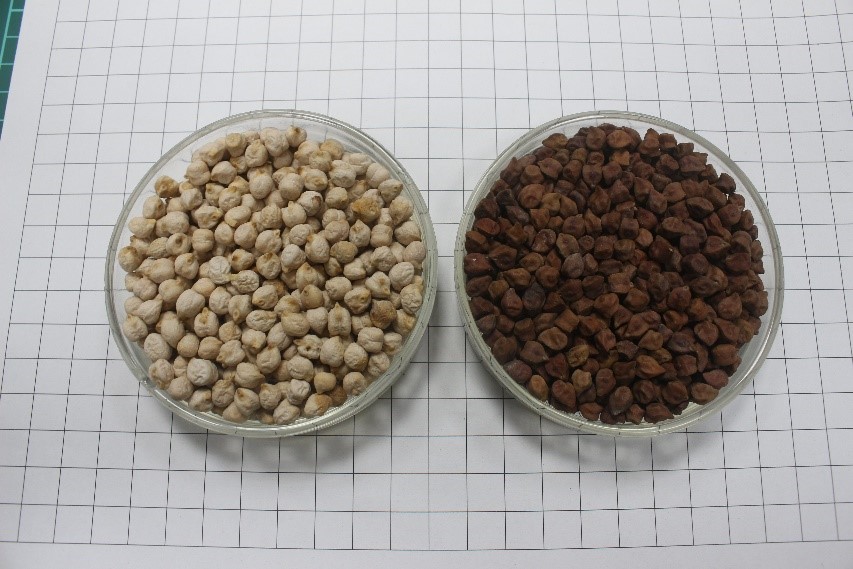 |
| Chickpea (Desi) plants with flowers and pods | Ripe Kabuli (left) and Desi (right) chickpea seeds |
- Soybeans
Soybeans are an important crop in Taiwan whose production from sowing to harvesting is mechanized. There are quite a lot of soybean varieties and value-added products, and the industry is already quite developed. To encourage the use of fallow land, we have collected 11 soybean varieties commonly used in Taiwan and compiled data on their adaptability. We will continue to observe their yields and quality in different areas of Taitung and provide the results to growers as a reference.
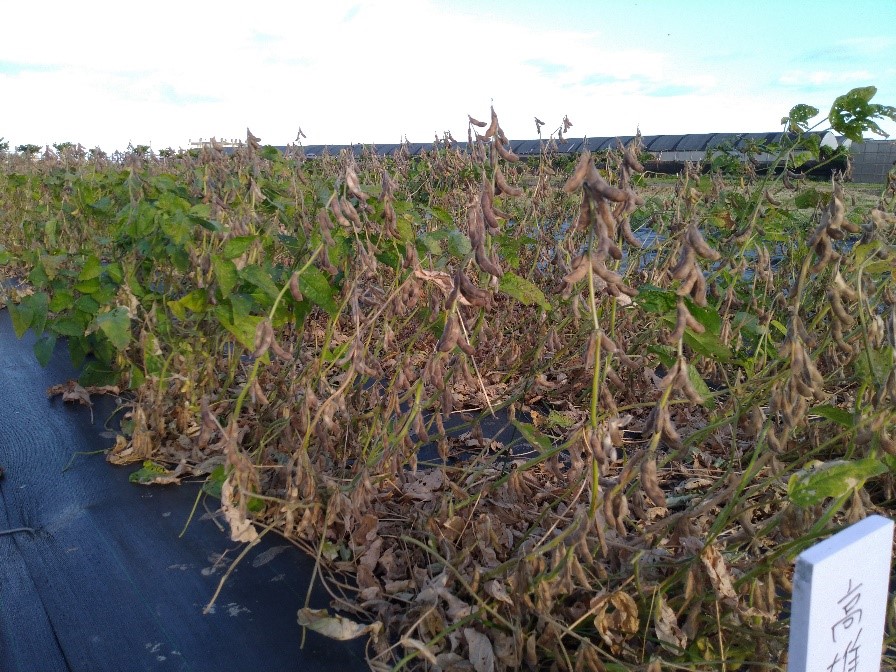 |
 |
| Ripe‘Kaohsiung selecled No. 10’soybeans in a field | Ripe‘Kaohsiung selecled No. 10’soybean seeds |





